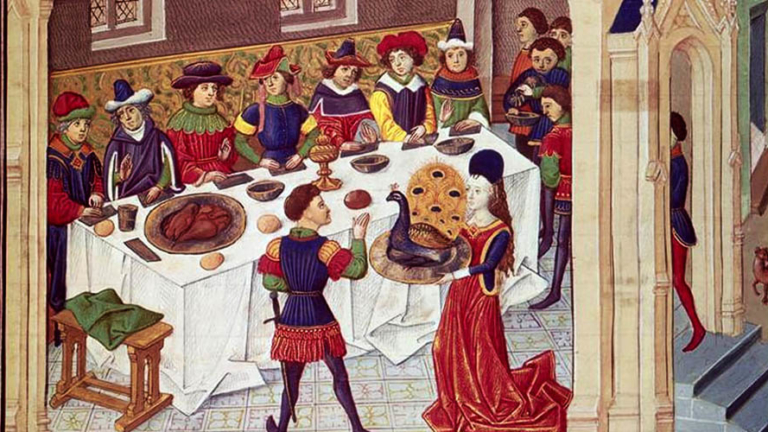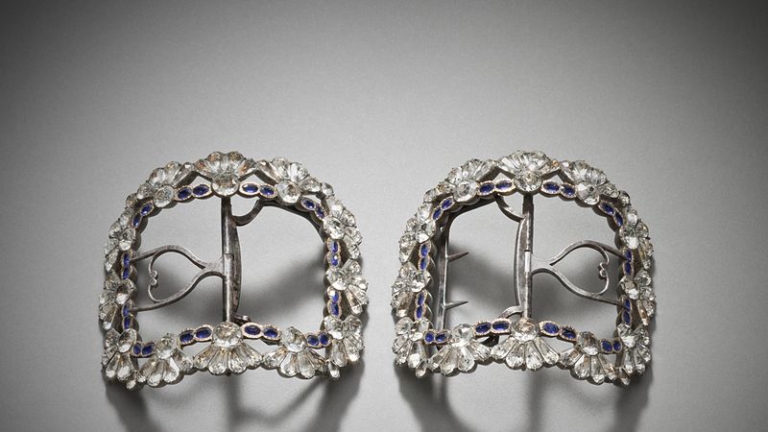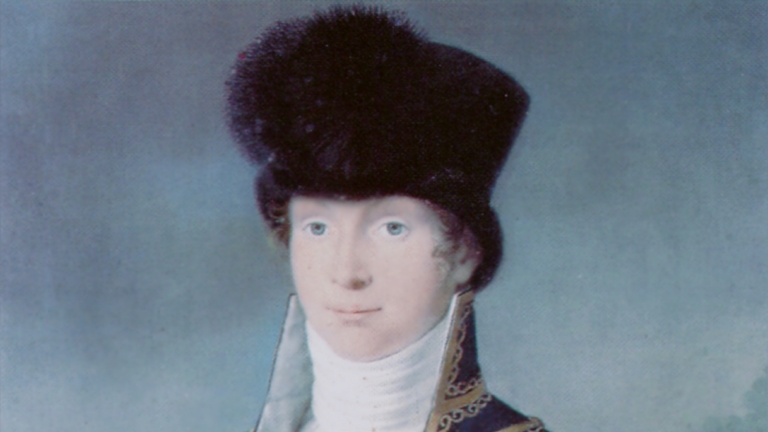Spanish Medieval Menswear

by Cynthia Barnes, First published for the July/August 2011 issue of Finery
The first half of the fourteenth century was a time of social and political upheaval in Catalunya (Catalonia) and other kingdoms of what would eventually unite as Spain. The social changes are paralleled in men’s dress, as revealed by my study of serving men’s fashion in Catalan paintings from 1380-1440.
In the late 14th century, clothing was quite primitive. Serving men in paintings wear a loose, solid-colored garment called a gona, which appears to have a center front opening that is laced shut. Most of us would liken it to a ’T’ tunic. The hem of the gona was just below knee-length. The gona was worn belted at the waist, over leg coverings called calsa. A white coif is nearly universal headgear.
By the 1410s, styles in both painting and fashion were beginning to change. In the early fifteenth century painting Retaule de St. Julia y Basilia, servers still wear the gona, but now it has shaping through the body and gathers at the sleeve head. The hem is now above the knee. The gona is most likely worn over a jubon that holds up the hose, which has a close fitting, vertical collar and long close fitting sleeves. The servers wear red hose, which might be closed or open (two separate legs). The shoes are nearly invisible or they may be leather-footed hose. Hats are absent on servers. Contrary to etiquette manuals of the period, there are no service towels, carving implements or other tools visible for staff or guests.

The 1430’s painting of the Wedding at Cana illustrates typical Catalan and Aragonian fashions from the second quarter of the fifteenth century, and shows still more sophistication in garment construction. Both guests and staff are wearing what is now called Gothic International style, just being adopted in 1430s Catalunya. Key garments include the jubon, which has progressed to a sleeved, short doublet that holds up the hose. Jubons can button all the way up or have a v-shaped front. Worn with it are full bottom hose. Broadly speaking, similar nether garments were in use during the early years of Henry VIII’s court some 60-80 years later. In addition, an optional short, belted “gona” or “houppelanda” with elbow-length sleeves could be worn as a warmth layer. Servers are shown wearing non-uniform dress; the Marshall of the hall, identified by his staff of office, instructs the rest of the staff.
Throughout the 50 years surveyed, all men in service are clean shaven. Most of the courtiers are also clean shaven, the exceptions being identifiable Rabbis, Arabs, scholars and foreigners. The typical hairstyle for Spanish serving staff is the “bowl” cut, as illustrated in many contemporary Spanish paintings and illuminations.

In every 1410-40 Catalan dining scene, all of the Hall staff wear belts over their gowns. These belts sit at the waist. The belts are probably leather, maybe 1-2″ wide, in many colors, though red is popular. They can be plain or decorated with metal buckles, tips & studs. The higher the wearer’s rank, the more elaborate the decoration. Sometimes the servers, carvers and cup bearers hang long daggers from their belts, but they are not required, and are more common on men of higher rank. Belt purses are not seen on hall staff, although they are definitely seen at other events held in hall such as receipt of gifts, meeting visiting dignitaries and attending court. Metal accessories are commonly seen on upper hall staff (poshly dressed servers, cup bearers, the Marshall) in the form of belt findings and possibly buttons. Lower class staff (plainly dressed servers, water bearers, women) do not wear shiny things. No other jewelry, chains, or shiny hat baubles are seen on any hall staff. Pilgrims badges were in common use, but they are not seen in the hundreds of illustrations that I have.



Leave a comment